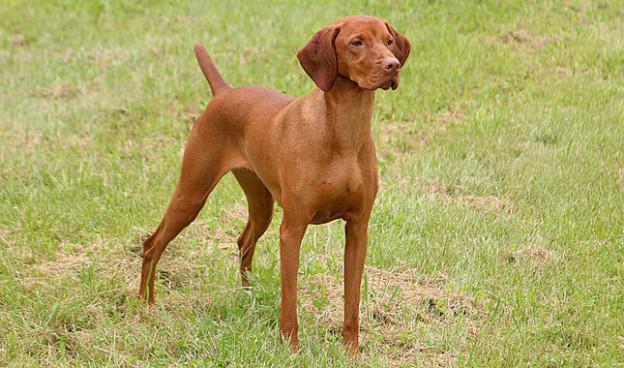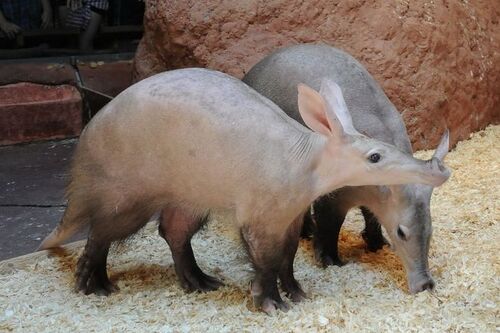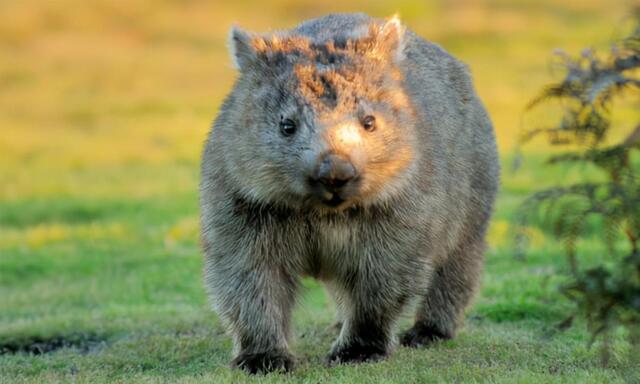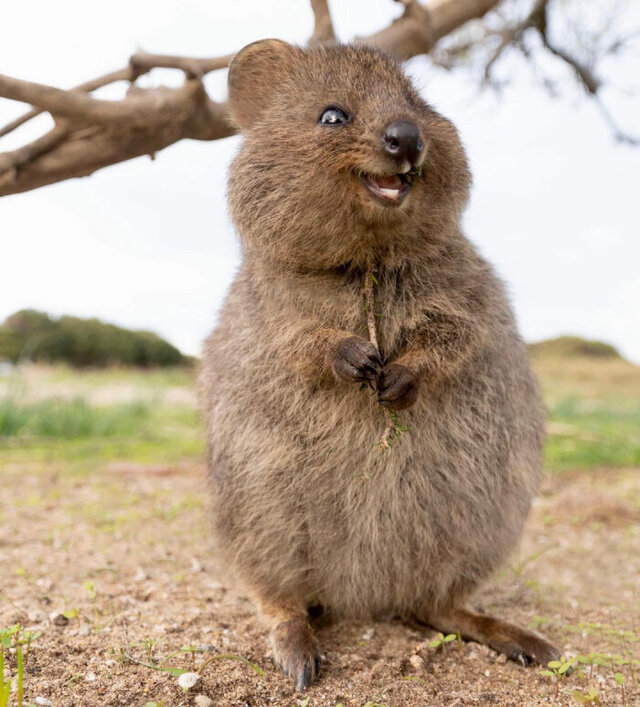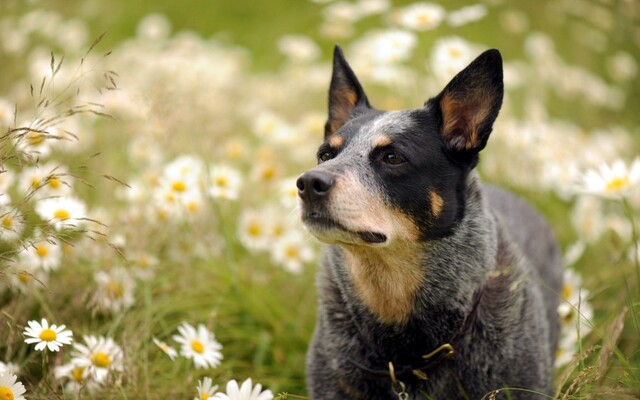Opossum
IUCN
LCBasic Information
Scientific classification
- name:Opossum
- Scientific Name:Didelphinae
- Outline:Rodents
- Family:Didelphimorphia Ameridelphia
Vital signs
- length:38-51cm
- Weight:2-6kg
- lifetime:3-7years
Feature
Survival Strategy: Opossums use their unique "playing dead" strategy to escape predators. When feeling threatened, opossums will show a very realistic state of death, including respiratory arrest, decreased body temperature, body shaking, and discharge of foul-smelling fluid from anal glands, so that predators believe they are dead and avoid being eaten.
Reproductive Ability: Opossums have a very strong reproductive capacity. Female opossums can give birth to multiple pups per litter, up to 20. After birth, the pups live in the mother's pouch for a period of time, and then climb onto the mother's back until they can survive independently.
Food Range: Opossums are omnivorous animals, and their food includes plants, insects, small animals, etc. They can eat almost anything, including garbage and rotten fruits, which allows them to survive in a variety of environments.
Body Temperature and Health: Opossums have a low body temperature, which makes rabie
Distribution and Habitat
It is found from southeastern Canada to Argentina in natural habitats such as deciduous forests, woods, and wetlands, and is also common in urban areas.
Appearance
They have a pointed snout, hairless ears and a long tail that they use to grasp tree trunks and small objects. Their fur is dark gray-brown with white hair on their faces.
Details
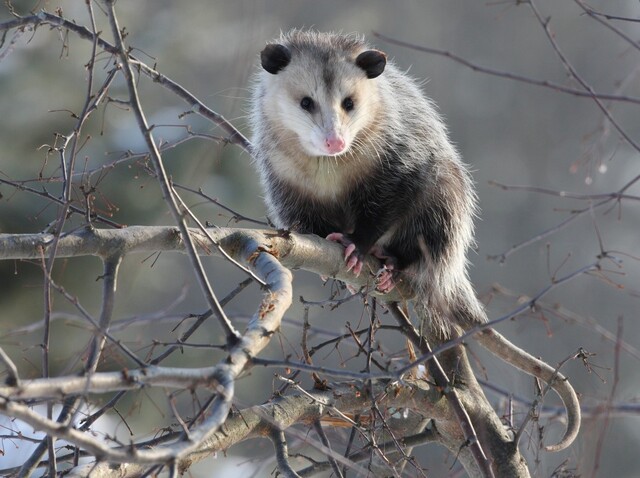
Opossum (scientific name Didelphinae, English name: Opossum) is a general term for mammals of the family Opossum in the order Possumidae. It is a small to medium-sized mammal. The mother opossum is named "opossum" because she can carry her young around with her. It has extraordinary reproductive skills. It is often described as a creature that is "good at taking care of babies". Lifespan is 3 to 7 years. The body length ranges from 38 to 51 cm, which includes the length of the head and body of the opossum, but not the length of the tail. It is small to medium-sized; plantigrade, short limbs, all with 5 toes, large hind foot big toes, no claws, and can hold hands; the tail is long and entangled, without hair, and can hook branches to act as the fifth limb, and the tail and feet are covered with scales; the snout is long, the braincase is narrow, and the sagittal ridge is well developed; it has the largest number of teeth among living land mammals, with small incisors, large canines, and tricuspid molars.
Opossums are mainly produced in the Americas, mostly distributed in southeastern Canada, and southward through the eastern United States and Mexico to Argentina. They live alone and in no fixed place, temporarily living in existing caves or under human houses. They are nocturnal and docile, often going out at night to prey on small invertebrates such as insects and snails, and also eat some plant food. The average estrus cycle is 28 days, the gestation period is 12-14 days, the number of litters is large, up to 13, the lactation period is 70-125 days; the life span is 2-4 years. [4]
When threatened or injured, opossums will roar (especially males), play dead, and imitate the appearance and smell of sick or dead animals. Because they suddenly stop in mid-running to confuse predators, and then suddenly jump up and run away, they are called "brake hands". Their hair is fine and soft, and is used to produce high-end fur and textile materials.
Species History
The American opossum is one of the few marsupials that live outside of Australia and its neighboring islands (the other is the South American opossum). Due to its diversity and strong ability to adapt to the environment, the American opossum has come a long way over 70 million years.
The Australian marsupial possum is often mistakenly translated as opossum by Chinese Australians (the two English names are similar), but its Chinese name is actually possum. Although opossums and possums belong to the same order of metatheria, opossums belong to the American marsupial order, while possums belong to the Australian marsupial order. The two diverged earlier and are more distantly related.
Fossils that are very similar to the living American opossums were first found in the strata of the late Cretaceous period, which shows that the opossum family is a fairly ancient group among marsupials. In the late Cretaceous period, which was 65 to 90 million years ago, North America and South America were still closely connected. Soon, North and South America were "ripped apart". At that time, only a very small number of herbivorous true mammals (mainly Edentata and Southern Ungulates) were distributed in South America. Without carnivorous natural enemies, the marsupials in South America (not just opossums) lived a carefree life. Unfortunately, the good times did not last long. Two or three million years ago, North and South America joined hands again through the Panama Land Bridge, allowing carnivores among the eutherians to invade South America from North America. Most of the marsupials in South America (such as the marsupial saber-toothed tiger) became extinct, and only the opossums became immortal.
Mammals include three major groups: monotremes, marsupials, and placental mammals. Monotremes reproduce by laying eggs, also known as prototheria, such as echidnas; marsupials belong to metatheria, while placental mammals belong to eutheria.
Morphological characteristics
The small opossums are as big as mice, and the largest are much larger than cats. Although they vary greatly in size, they have many commonalities: long snouts, small pointed mouths like mice; small ears without hair, thin and somewhat transparent; long tails that can wrap around branches like soft whips; 5 toes on each foot, and the big toes on each hind foot can be folded up and close to the sole of the foot; 50 fully functional teeth, eating both meat and vegetables. These commonalities are only in general. The short-tailed opossum lives on the ground and rarely climbs trees. Its short tail plays a balancing role.
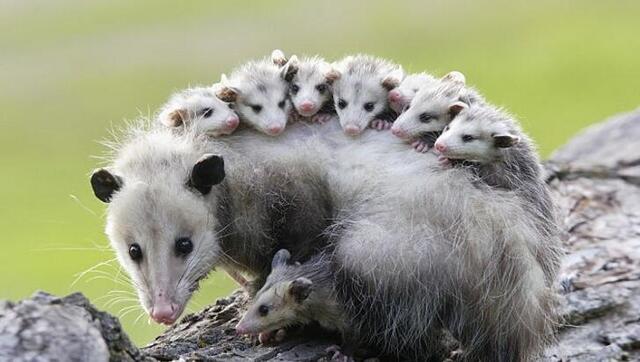
Habitat
Among all the known habitats of marsupial mammals, the prairie opossum lives in the southernmost area. It has a strong ability to adapt to the environment. It can be found in plains, forests, swamps, and farmlands. Moreover, it does not hibernate. It usually lives alone, hiding during the day and coming out at night. It likes to live in trees. This species is also one of the least known marsupial mammals. The prairie opossum lives in the arid and cold Patagonia and Monte Desert areas of Argentina. It is an omnivore, mainly feeding on mice and arthropods, preying on insects, snails, earthworms, birds, frogs, lizards, mice, etc., and also eats some fruits and vegetables.
People have only found less than 10 populations in the area between 33 and 48 degrees south latitude, but the remains of the prairie opossum found in the feces of local owls have led people to believe that there are more than 90 populations. The main threat facing the prairie opossum is the loss of habitat due to increasing desertification in Patagonia.
There are several protected areas within the range of the prairie opossum. Since little is known about its exact geographical distribution, living habits and natural history, further research is needed to determine the exact status of the species.
In January 2016, staff from the Animal Services Department of California, USA, found an opossum with several arrows in the Los Angeles Mountains. The opossum was hit in the head and torso by crossbow arrows.
Habits Diet
The opossum is docile and eats small invertebrates and plant food. It often goes out at night to prey on small invertebrates such as insects and snails, and also eats some plant food. Usually, the opossum likes to live in trees. It moves very carefully, often hooking the branches with its hind legs first, standing firm before considering the next move. If it finds an intruder under the tree, it does not run away immediately, but holds the branch tightly with its forelimbs, opens its eyes wide, and watches the intruder's every move before deciding on a countermeasure.
They rely on their keen sense of smell and flexible body to quickly locate the source of food. Opossums usually move at night to avoid daytime predators. They jump between branches, use their tails to keep balance, and swiftly shuttle through the rainforest in search of food.
Survival Challenges of Opossums
Although opossums have excellent reproductive capacity and adaptability, they still face many survival challenges. Opossums have many natural enemies, such as wolves, dogs, etc., but when they encounter enemies, they still have some unique skills, otherwise they would not have survived to this day. When opossums are too late to escape from enemies, they often pretend to be dead. Some people once thought that the "playing dead" of opossums was not a trick, but that they were really scared by the ferocious beasts when they were in great danger. Scientists used the principles of electrophysiology to conduct live brain tests on opossums and revealed this mystery. The data analysis of the bioelectric current recorded in the opossum's body under different conditions concluded that when the opossum was in a "playing dead" state, their brains never stopped working for a moment, which was not only very different from the bioelectric current situation when the animal was anesthetized or sleeping soundly, but even when "playing dead", the opossum's brain worked more efficiently.
Playing dead
When escaping from enemies, the opossum has a trick of "playing dead", which is very effective and can confuse many enemies. When it is about to be captured, it will immediately lie on the ground, its face suddenly pale, open its mouth, stick out its tongue, close its eyes, and keep its long tail curled between its upper and lower jaws. Its belly will swell, its breathing and heartbeat will stop, its body will keep shaking violently, and it will pretend to be dead with a very painful expression, which will make the pursuer feel frightened for a while, and under the effect of abnormal psychology, it will no longer hunt it. If this dramatic fall is not enough to confuse the opponent, the opossum will discharge a foul-smelling yellow liquid from the scent gland next to its anus. This liquid can make the opponent believe that it is dead and rotten. At this moment, when the pursuer touches any part of its body, it will not move at all. Most predators like fresh meat. Once dead, the body will rot and be full of germs. At this time, the predator will leave. Therefore, many carnivores saw that the opossum was indeed "dead", no air came out of its nostrils, and even its body temperature dropped a lot, so they ignored it. When the enemy was far away, it would take a few minutes or a few hours for the opossum to return to normal. Seeing that there was no danger around, it immediately got up and ran away, saving its life.
Scientists used an instrument to test the opossum and discovered the secret of the opossum's pretending to be dead. Because the brain cells of animals can continuously emit pulses, forming a kind of bioelectric current. According to the characteristics of the brain's bioelectric current, it is entirely possible to judge whether the animal is sleeping or numb; whether it is comatose or awake. Instrument tests were conducted on the opossums pretending to be dead. The current graph recorded by the instrument showed that when they were pretending to be dead, their brain cells did not stop activity for a moment, and were even more active than usual. Obviously, when the opossum was pretending to be dead, it must have been nervously waiting for an opportunity to escape. It was neither comatose nor in shock, and it was really pretending to be dead.
The situation of the opossum when "pretending to be dead" is really similar to the behavior of an epileptic patient. However, people who suffer from epilepsy will feel very painful and worry about recurrence in the future. However, the "epilepsy" of opossums is different. It is not only painless and itchy, but also a trick to escape death. Once in danger, "epilepsy" will immediately attack.
So why does the "epilepsy" of opossums attack so quickly? It turns out that when opossums are threatened or attacked by enemies, a paralyzing substance will be quickly secreted in their bodies. This substance quickly enters the brain and causes it to lose consciousness immediately and lie on the ground, as if it has died. This "fake play" method is a special self-defense instinct given to opossums by nature.
Opossums will suddenly stop while running. This ability to brake quickly is probably unmatched by other animals in the world. It is also this ability that confuses predators. Animals that catch them are often frightened by this action, and they also hurriedly "brake" and stay there, "confused" for a long time. At this time, the opossum, which was standing still, suddenly jumped up and ran away. This mutation makes the animals chasing them panic, and they often stand there dumbfounded, watching the cooked duck fly away again. When the pursuers wake up and want to catch the opossum again, they have already run away without a trace. This ability of the opossum has earned them the title of "brake hand" in the animal world.
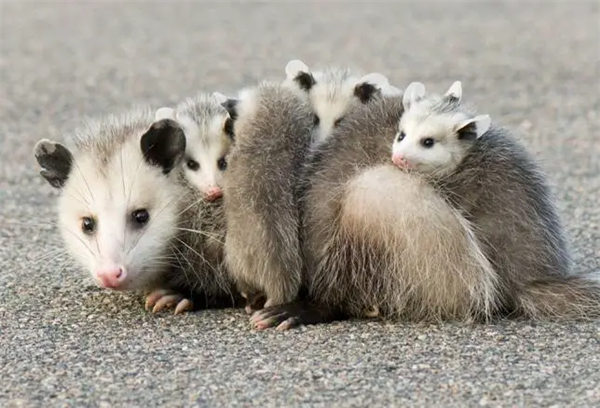
Reproduction method
Opossums are one of the mammals with extremely strong reproductive capacity on the earth. Opossums have strong reproductive capacity. They can reproduce 2 to 3 times a year, with an interval of about 122 days each time, concentrated between January and February and June and July. Marsupials generally have a short gestation period (pregnancy period) and a long lactation period. There is no way, the placenta of marsupials is particularly primitive, so this placenta is called a primitive placenta. The embryo has a large yolk sac to provide nutrition for the embryo. When the yolk is consumed, the fetus must be discharged from the mother's body and crawl into the mother's pouch for breastfeeding. Surprisingly, the gestation period of females is about 12 to 13 days, and the size is quite small, only the size of a small worm. Opossums give birth to 6 to 15 pups per litter, and the period from pregnancy to delivery is only a dozen days. The newly born baby opossums are less than 2 cm long and can crawl into the pouch to continue to develop. The lactation period is about 102 days, and the pups reach sexual maturity in about half a year. This is much shorter than many other mammals. This rapid reproduction rate has caused the number of opossums in the rainforest to increase rapidly, becoming a common resident here.
Males bear the main responsibility for raising children. After giving birth to the pups, female opossums will place them in the pouch of male opossums. This pouch is located in the abdomen of the male opossum and is specifically used to protect and raise the pups. The pouch of the male opossum can hold up to 12 pups. When the opossums go out to look for food, their pouches are always bulging, as if filled with small balls, and they also appear to be wobbly when walking.
Distribution range
Opossums are mainly produced in Latin America. Distributed in southeastern Canada, southward through the eastern United States and Mexico to the 47° south latitude in Argentina.
Scientific research
Scientists use computer calculations to estimate the IQ of a mammal. An IQ greater than 1.0 means that the brain of this species is larger than average; an IQ less than 1.0 means that the brain of this species is smaller. The IQ of humans (from the perspective of biological evolution, the highest mammal) is about 7.5; the IQ of raccoons produced in North America and Central America is about 1.4. So, what is the IQ of opossums? It is about 0.35 to 0.57, so opossums are mammals with the lowest IQ.
Among mammals, the more complex the social relationship of the group, the more developed its intelligence. Scientists use 2 to 20 points to evaluate the social relationship of animals in groups: 2 points are the least complex animals, and 20 points are the most complex animals. Except for the mother-child relationship of about 3 months, opossums live alone for the rest of the time, with limited behavioral performance, and no complex social relationships, so they can only get 2 points (the lowest score). The highest score goes to higher primates such as apes and monkeys, which naturally get 20 points (the full score).

